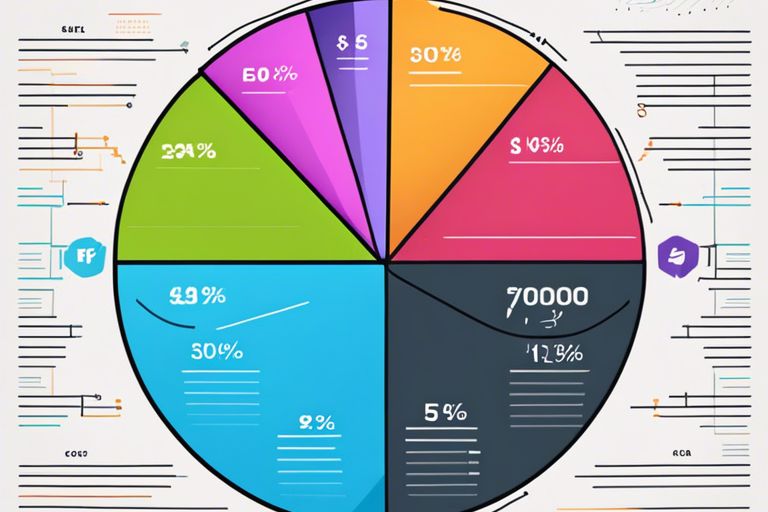Portfolio diversification is a crucial strategy for reducing risk and maximizing returns in the stock market. By spreading your investments across different asset classes, industries, and geographic regions, you can protect your portfolio from market fluctuations. Allocating your assets strategically can increase the potential for long-term growth while lowering the overall volatility of your investments. In this guide, we will explore effective ways to safely diversify your stock portfolio and optimize your investment strategy.
Understanding the Basics of Portfolio Diversification
What is Portfolio Diversification?
Before delving into the intricacies of diversifying your stock portfolio, it’s crucial to comprehend the basic concept of portfolio diversification. In simple terms, it involves spreading your investments across different assets to mitigate risk.
Why is Diversification Important?
Some investors make the mistake of putting all their money into a single stock or asset, exposing themselves to significant risk. Diversification is imperative because it helps reduce the impact of market fluctuations on your portfolio and increases the chances of steady returns over the long term.
This strategy is key in protecting your investments from large losses that can occur when a particular sector or asset class underperforms. By diversifying, you can smooth out the ups and downs in your overall portfolio performance.

Factors to Consider When Diversifying
Assuming you’re looking to diversify your stock portfolio, there are several factors to consider to make informed decisions. Firstly, risk tolerance is crucial. Secondly, investment horizon plays a vital role in your diversification strategy. Lastly, recognizing the importance of research and monitoring is key to successful diversification.
Risk Tolerance
Little risk tolerance means you prefer investments with less volatility. Consider incorporating stable, low-risk assets like bonds into your portfolio to manage risk effectively.
Investment Horizon
There’s no one-size-fits-all approach to investment horizon. Depending on your financial goals, you may choose short-term or long-term investments for diversification. Investment horizon has a significant impact on the types of assets you should include in your portfolio, so it’s necessary to align your investments with your time frame.
How-To Safely Diversify Your Stock Portfolio
Incorporating Different Asset Classes
Some of the most effective ways to safely diversify your stock portfolio involve incorporating different asset classes. Diversifying across asset classes such as stocks, bonds, real estate, and commodities can help spread risk and increase the likelihood of achieving more consistent returns over time.
Geographic Diversification
There’s no denying the importance of geographic diversification when it comes to safeguarding your stock portfolio. Investing in companies from various countries and regions can protect your portfolio from country-specific risks such as political instability, economic downturns, or natural disasters.
Your portfolio can benefit from exposure to different markets, currencies, and economies, reducing the impact of any singular event on your overall investments. Consider investing in both developed and emerging markets to capture global growth opportunities while minimizing risk.

Tips for Maintaining a Diversified Portfolio
Many investors understand the importance of maintaining a diversified portfolio to mitigate risks and maximize returns. Here are some tips to help ensure that your portfolio stays diversified:
- Regular Portfolio Review: Any successful investor knows the significance of regularly reviewing their portfolio to ensure it remains diversified. Monitoring your investments allows you to identify any over-concentration in a specific sector or stock.
- Rebalancing Strategies: One effective way to maintain a diversified portfolio is through periodic rebalancing. This involves adjusting your portfolio back to its original asset allocation to prevent overexposure to certain investments. Plus, it helps in securing your investment goals and managing risk effectively.
Regular Portfolio Review
Any successful investor knows the significance of regularly reviewing their portfolio to ensure it remains diversified. Monitoring your investments allows you to identify any over-concentration in a specific sector or stock. This proactive approach can help you make informed decisions and adjust your portfolio accordingly, avoiding potential losses in the future.
Rebalancing Strategies
One effective way to maintain a diversified portfolio is through periodic rebalancing. This involves adjusting your portfolio back to its original asset allocation to prevent overexposure to certain investments. Plus, it helps in securing your investment goals and managing risk effectively. By selling off some of the overperforming assets and reallocating funds into underperforming ones, you ensure a more balanced and stable portfolio over time.
To wrap up
Taking this into account, diversifying your stock portfolio is crucial to manage risk and maximize returns in the long term. By spreading your investments across different asset classes, industries, and geographic regions, you can cushion the impact of market volatility and potentially increase your chances of achieving your financial goals. Remember to regularly review and adjust your portfolio to ensure it remains aligned with your objectives and risk tolerance.
FAQ
Q: Why is diversification important in a stock portfolio?
A: Diversification is important in a stock portfolio because it helps spread risk across different investments, reducing the impact of any one investment performing poorly.
Q: How many stocks should I aim to have in my diversified portfolio?
A: While there is no one-size-fits-all answer, experts recommend holding between 15 to 30 stocks to achieve adequate diversification.
Q: What are some ways to diversify my stock portfolio?
A: Some ways to diversify your stock portfolio include investing in different sectors, industries, geographic regions, and asset classes.
Q: How can I assess the risk level of my diversified stock portfolio?
A: You can assess the risk level of your diversified stock portfolio by evaluating the correlation between your investments – the lower the correlation, the better the diversification.
Q: Should I consider adding bonds or other assets to my stock portfolio for diversification?
A: Yes, adding bonds or other assets to your stock portfolio can help further diversify your investments and reduce overall risk, especially during market downturns.
Q: How often should I review and rebalance my diversified stock portfolio?
A: It is recommended to review and rebalance your diversified stock portfolio at least annually or whenever there are significant changes in your financial goals or market conditions.
Q: What are some common mistakes to avoid when diversifying a stock portfolio?
A: Common mistakes to avoid when diversifying a stock portfolio include over-diversification, neglecting to periodically rebalance, and failing to consider the correlation between investments.







